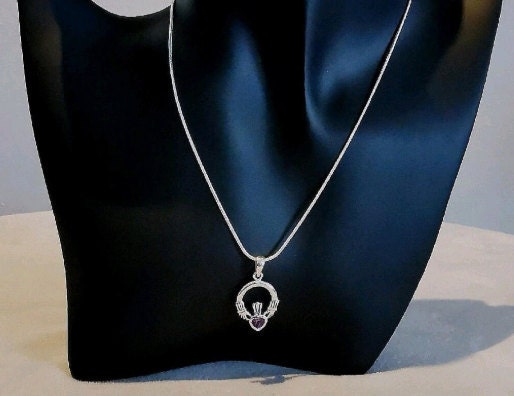The Claddagh design, with its distinctive heart, hands, and crown, originated in the small fishing village of Claddagh, near Galway, Ireland. The name "Claddagh" itself derives from the Irish word "Cladach," meaning "shore." The village, which dates back to the 5th century, was a close-knit community known for its fishing traditions and unique customs.The most well-known legend surrounding the Claddagh ring involves Richard Joyce, a fisherman from Claddagh. In the late 17th century, Joyce was captured by Algerian pirates and sold into slavery. While in captivity, he learned the craft of goldsmithing. Eventually, he was released and returned to Ireland, bringing with him the design that would become the Claddagh ring. The ring he created, with its heart symbolizing love, hands representing friendship, and crown signifying loyalty, became a meaningful gift for loved ones and a lasting representation of Irish culture.
The Claddagh's design is simple yet deeply symbolic. Each element carries a distinct meaning that contributes to the ring's significance:
The Heart: Represents love, the core of any meaningful relationship.
The Hands: Symbolize friendship, a foundation upon which love and loyalty are built.
The Crown: Signifies loyalty, a commitment to staying true to one's loved ones and values.
This meaningful combination has made the Claddagh ring a popular token for engagements, weddings, and lifelong friendships. Many people wear it to honor their Irish heritage or simply to express the values the design represents.
One of the unique aspects of the Claddagh ring is the way it is worn, which can convey different relationship statuses:
On the right hand, with the heart facing outward: Indicates that the wearer is single and open to love.
On the right hand, with the heart facing inward: Shows that the wearer is in a committed relationship.
On the left hand, with the heart facing outward: Traditionally means engagement.
On the left hand, with the heart facing inward: Represents marriage, showing that the wearer's heart is taken.
These traditions have been passed down for generations, making the Claddagh ring more than just a piece of jewelry—it is a statement of one's personal connections and commitments.
While the Claddagh ring is undoubtedly one of the most famous symbols of Irish culture, its influence has extended far beyond Ireland. Many Irish families pass Claddagh rings down as heirlooms, keeping the tradition alive. In Irish weddings, Claddagh rings are sometimes used instead of traditional wedding bands, further emphasizing their romantic and cultural significance.
Additionally, the Claddagh has become a symbol of the Irish diaspora. Many Irish immigrants carried Claddagh rings with them to new lands, using them as a reminder of home. Today, Claddagh jewelry is popular in the United States, Canada, Australia, and other places with strong Irish communities. Celebrities and public figures have also embraced the Claddagh, further spreading its popularity worldwide.
Although the ring remains the most iconic form of Claddagh jewelry, the design has been incorporated into various other pieces, including necklaces, bracelets, earrings, and even tattoos. The Claddagh symbol is also found in home décor, artwork, and souvenirs, making it a cherished gift for those who appreciate its meaning.
People often choose Claddagh jewelry for special occasions, such as birthdays, anniversaries, and graduations. Because of its symbolism, it is an excellent way to express love, friendship, and loyalty in a tangible and lasting way.
While rooted in tradition, the Claddagh remains relevant in modern times. In a world where relationships and values continue to evolve, the Claddagh serves as a reminder of the importance of love, friendship, and loyalty. Many people wear the Claddagh not only to honor their Irish heritage but also as a personal emblem of their beliefs and commitments.
Furthermore, the Claddagh has taken on new meanings for different groups of people. Some view it as a symbol of self-love and personal growth, wearing the ring as a commitment to themselves. Others see it as a representation of community and connection, emphasizing the importance of meaningful relationships in their lives.


